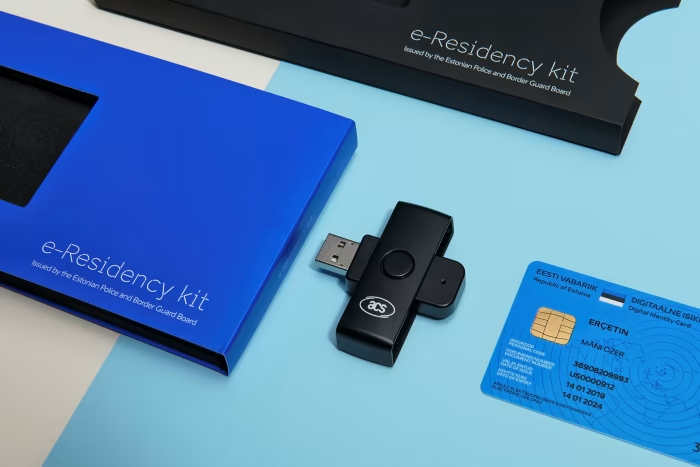Android Phones: The New Earthquake Detectors Saving Lives

In a world where earthquakes can strike without warning, a groundbreaking technology is turning everyday Android phones into life-saving tools. Scientists have developed a system that uses the built-in sensors in Android devices to detect earthquakes before the shaking begins. This innovation, called the Android Earthquake Alerts (AEA) system, is changing how we prepare for and respond to seismic events. It’s a game-changer, especially for areas without advanced seismic monitoring stations. Imagine your phone buzzing with a warning seconds before the ground shakes—those moments could mean the difference between safety and danger.
I remember a camping trip in California when my phone suddenly blared an alert. It was a “Take Action” warning from the AEA system, urging me to drop, cover, and hold on. Seconds later, the ground trembled, but I was already under a sturdy table, safe. That experience showed me how powerful this technology can be. This article explores how Android phones detect earthquakes, why this matters, and what the future holds for this life-saving system.
How Android Phones Detect Earthquakes
Android phones are equipped with tiny sensors called accelerometers, which usually help flip the screen when you tilt your device. These sensors can also detect vibrations, like those caused by an earthquake’s primary (P) waves—the fast-moving, less destructive waves that arrive before the stronger secondary (S) waves. When a stationary Android phone senses these vibrations, it sends a signal with a rough location to Google’s servers. The servers analyze data from many phones to confirm an earthquake and estimate its size and location.
This crowdsourced approach turns millions of Android phones into a massive global network of mini-seismometers. Unlike traditional seismic stations, which are expensive and limited in number, Android phones are everywhere—over 3 billion are in use worldwide. This makes the system especially helpful in regions without dedicated earthquake monitoring infrastructure, like parts of Central Asia or rural areas in developing countries.
Why It Works
- Speed: Electronic signals travel faster than seismic waves, allowing alerts to reach users before the shaking.
- Scale: With billions of Android devices, the system covers vast areas, even remote ones.
- Accessibility: The AEA system is built into most Android phones by default, requiring no extra apps.
Challenges
- Less precise than professional seismometers, phone sensors can mistake vibrations (like a truck passing) for earthquakes.
- Alerts may not reach people very close to the epicenter, where waves arrive too quickly.
- Phones must be stationary and connected to Wi-Fi or data to send signals.
| Feature | Android Earthquake Alerts | Traditional Seismic Networks |
|---|---|---|
| Cost | Low (uses existing phones) | High (requires specialized equipment) |
| Coverage | Global (3 billion+ devices) | Limited (fewer stations, mostly in developed areas) |
| Accuracy | Good but less precise | Highly precise |
| Speed | Fast (seconds before shaking) | Fast but limited by station locations |
What We Learned: This section explained how Android phones use their accelerometers to detect earthquake waves and send alerts. The system’s strength lies in its massive scale and low cost, but it’s not perfect due to sensor limitations.
The Impact of Android Earthquake Alerts
Since its launch in 2020, the AEA system has made a huge difference. It has detected over 18,000 earthquakes across 98 countries, from tiny tremors to a massive 7.8-magnitude quake in Turkey in 2023. Over 790 million alerts have been sent, reaching 2.5 billion people—ten times more than traditional systems could reach in 2019. In April 2025, during a 6.2-magnitude earthquake in Turkey, the system sent 16 million alerts, giving people up to 20 seconds to find safety.
A friend in the Philippines told me about getting a “Be Aware” alert during a 2023 quake. She had enough time to grab her kids and move away from a glass window before the shaking started. Surveys show 85% of users who received alerts felt shaking, with 36% getting the warning before it began. This proves the system’s ability to give critical seconds for action, like dropping under a table or moving away from hazards.
Benefits of the System
- Life-Saving Potential: Seconds of warning can help people take cover or evacuate.
- Wide Reach: It serves areas without traditional seismic networks, like rural regions.
- User Feedback: Surveys help improve the system, making alerts more accurate over time.
Limitations
- False alarms, though rare (only three in four years), can cause unnecessary panic.
- Offshore quakes are harder to detect, limiting tsunami warnings.
- Some users may not receive alerts in time due to network delays.
| Pros | Cons |
|---|---|
| Free and built into Android phones | Less accurate than dedicated seismometers |
| Covers remote and underserved areas | May miss offshore quakes or tsunamis |
| Fast alerts (seconds before shaking) | Requires internet or data connection |
| Improves with user feedback | Rare false alarms (e.g., thunderstorms) |
What We Learned: The AEA system has a massive global impact, saving lives by providing timely warnings. However, it faces challenges like false alarms and limited effectiveness for certain types of quakes.
The Future of Earthquake Detection
The AEA system is just the beginning. Scientists are working to make it even better by using machine learning to predict aftershocks or identify high-risk areas. Imagine a future where your phone not only warns you of a quake but also tells you how strong the shaking will be based on your building’s structure. Google is also exploring ways to integrate this technology with other disaster alerts, like for landslides or volcanic eruptions.
Privacy is a concern, but Google ensures that only rough location data is used, and no personal information is stored. Still, experts are looking into advanced techniques, like federated learning, to make data collection even more secure. As more phones join the network, the system will get faster and more accurate, potentially saving more lives.
What’s Next
- Personalized Alerts: Future updates could tailor warnings to your location or building type.
- Expanded Disasters: The system might detect other natural events, like tsunamis.
- Better Accuracy: Machine learning will reduce false alarms and improve predictions.
What We Learned: The future of the AEA system is bright, with plans to enhance accuracy and expand to other disasters. Privacy measures will be key to maintaining trust.
How You Can Stay Prepared
You don’t need to do much to benefit from the AEA system—it’s already on most Android phones. But you can take steps to make sure it works for you and keep yourself safe during an earthquake. Check your phone’s settings to ensure location services and alerts are enabled. Also, learn the basic safety steps for earthquakes: drop, cover, and hold on.
For more tips, visit the USGS Earthquake Safety Guide at usgs.gov or download the MyShake app from the Google Play Store for extra features. These resources can help you prepare for the unexpected. As someone who’s felt the ground shake, I can say that knowing what to do in those moments brings peace of mind.
Quick Tips for Earthquake Safety
- Check Settings: Ensure Android Earthquake Alerts and location services are on.
- Practice Safety: Learn to drop, cover, and hold on during a quake.
- Stay Informed: Use apps like MyShake for real-time updates.
What We Learned: This section gave practical advice on using the AEA system and staying safe. It emphasized simple steps anyone can take to be ready for an earthquake.
Conclusion
The Android Earthquake Alerts system is turning our phones into powerful tools for safety. By using the sensors in billions of Android devices, it detects earthquakes and sends warnings that can save lives. While it’s not perfect, its ability to reach remote areas and provide seconds of warning is a major step forward. As technology improves, this system will only get better, offering hope to earthquake-prone regions worldwide. So, next time your phone buzzes with an alert, you’ll know it’s not just a notification—it could be a lifesaver.





